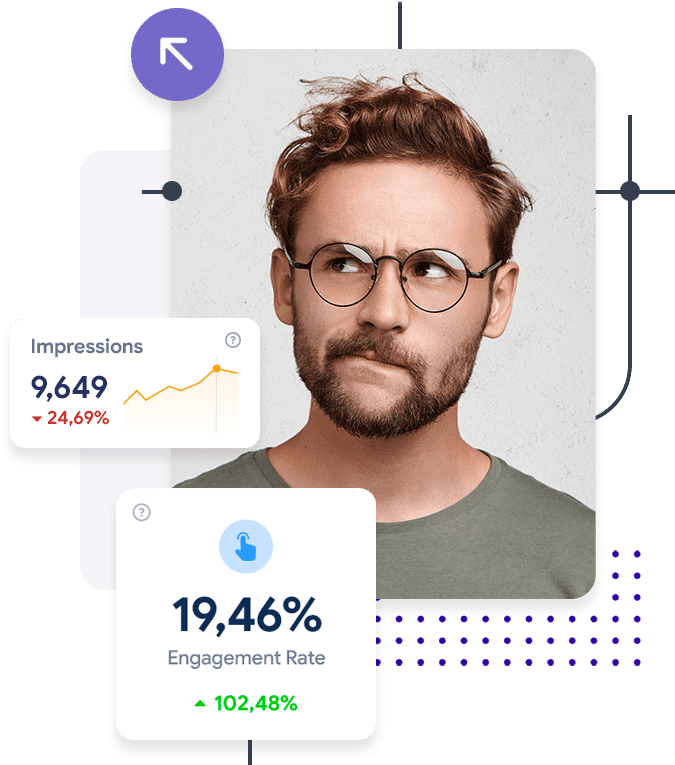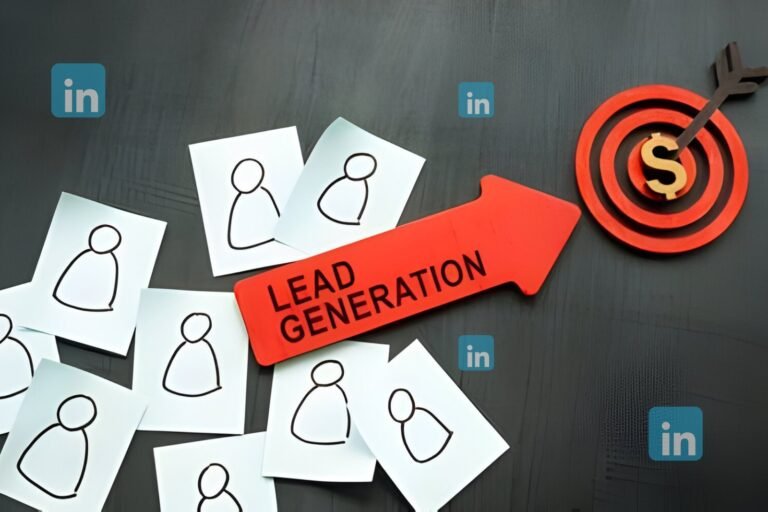LinkedIn vs. Other Platforms For Lead Generation
Why Businesses Prefer LinkedIn for Lead Generation
Qualified Leads from a Quality Audience
LinkedIn is renowned for its ability to generate qualified leads from a quality audience. Unlike other social media platforms, LinkedIn’s user base primarily consists of professionals, decision-makers, and industry leaders. This makes it an ideal platform for B2B lead generation, as businesses can connect with individuals who have the authority to make purchasing decisions.
- Professional User Base : LinkedIn’s users are typically professionals, making it easier to target B2B leads.
- Decision-Makers : Many LinkedIn users hold positions of authority within their organizations.
- Industry Leaders : The platform is frequented by thought leaders and influencers in various industries.
LinkedIn’s Professional User Base
LinkedIn’s professional user base sets it apart from other social media platforms. With over 700 million users, LinkedIn is a hub for professionals across various industries. This professional environment fosters meaningful connections and business opportunities.
- 700 Million Users : A vast network of professionals.
- Industry Diversity : Users from various sectors and industries.
- Professional Environment : Encourages business-related interactions.
LinkedIn’s Advanced Targeting Capabilities
LinkedIn offers advanced targeting capabilities that allow businesses to reach their ideal audience with precision. These targeting options include job title, industry, company size, and more, enabling businesses to tailor their campaigns to specific demographics.
- Job Title Targeting : Reach users based on their job titles.
- Industry Targeting : Target users within specific industries.
- Company Size Targeting : Focus on companies of a particular size.
LinkedIn vs. Facebook for Lead Generation
Audience Demographics
When comparing LinkedIn vs. Facebook for lead generation, audience demographics play a crucial role. LinkedIn’s audience is predominantly professional, while Facebook’s user base is more diverse, including a mix of personal and professional users.
- LinkedIn : Primarily professionals and decision-makers.
- Facebook : A mix of personal and professional users.
- Targeting : LinkedIn’s targeting is more suited for B2B, while Facebook is better for B2C.
Ad Formats and Effectiveness
LinkedIn and Facebook offer different ad formats, each with its own effectiveness. LinkedIn’s ad formats are designed for professional engagement, while Facebook’s ad formats are more visually appealing and interactive.
- LinkedIn Ad Formats : Sponsored Content, InMail, Text Ads.
- Facebook Ad Formats : Carousel Ads, Video Ads, Image Ads.
- Effectiveness : LinkedIn ads are effective for B2B, while Facebook ads excel in B2C.
Cost-Per-Lead Comparison
The cost-per-lead on LinkedIn is generally higher than on Facebook. However, the quality of leads generated on LinkedIn often justifies the higher cost, as they are more likely to convert into paying customers.
- LinkedIn : Higher cost-per-lead but higher quality leads.
- Facebook : Lower cost-per-lead but mixed lead quality.
- ROI : LinkedIn offers a better return on investment for B2B lead generation.
LinkedIn vs. Instagram for Lead Generation 
Visual Content vs. Professional Content
LinkedIn and Instagram cater to different types of content. LinkedIn focuses on professional content, while Instagram is known for its visual content. This difference impacts the type of leads generated on each platform.
- LinkedIn : Professional articles, industry news, thought leadership.
- Instagram : Images, videos, stories.
- Content Strategy : LinkedIn is better for professional content, while Instagram excels in visual storytelling.
Engagement Rates
Engagement rates on LinkedIn and Instagram vary significantly. LinkedIn’s engagement is driven by professional interactions, while Instagram’s engagement is fueled by visual content and personal connections.
- LinkedIn : Engagement through comments, shares, and professional discussions.
- Instagram : Engagement through likes, comments, and shares of visual content.
- User Interaction : LinkedIn users engage with content that adds professional value, while Instagram users engage with visually appealing content.
Lead Generation Tools
Both LinkedIn and Instagram offer lead generation tools, but they differ in functionality and effectiveness. LinkedIn’s tools are designed for professional lead generation, while Instagram’s tools are more suited for brand awareness and consumer engagement.
- LinkedIn : Lead Gen Forms, Sponsored Content, InMail.
- Instagram : Shoppable Posts, Stories Ads, Influencer Partnerships.
- Tool Effectiveness : LinkedIn’s tools are more effective for B2B, while Instagram’s tools are better for B2C.
LinkedIn vs. YouTube for Lead Generation
Video Content vs. Text-Based Content
LinkedIn and YouTube cater to different content formats. LinkedIn primarily focuses on text-based content, while YouTube is a platform for video content. This difference influences the type of leads generated on each platform.
- LinkedIn : Articles, posts, professional updates.
- YouTube : Videos, tutorials, vlogs.
- Content Preference : LinkedIn is ideal for text-based professional content, while YouTube excels in video content.
User Intent and Behavior
User intent and behavior on LinkedIn and YouTube differ significantly. LinkedIn users are typically looking for professional connections and industry insights, while YouTube users are seeking entertainment and information.
- LinkedIn : Users seek professional growth and networking.
- YouTube : Users seek entertainment, tutorials, and information.
- Behavior : LinkedIn users are more likely to engage with professional content, while YouTube users engage with video content.
Lead Generation Efficiency
The efficiency of lead generation on LinkedIn and YouTube varies based on the type of content and audience. LinkedIn is more efficient for B2B lead generation, while YouTube is effective for brand awareness and consumer engagement.
- LinkedIn : Efficient for B2B lead generation.
- YouTube : Effective for brand awareness and consumer engagement.
- Lead Quality : LinkedIn generates higher quality B2B leads, while YouTube excels in reaching a broader audience.
LinkedIn Lead Gen Forms vs. Traditional Landing Pages 
Seamless User Experience
LinkedIn Lead Gen Forms offer a seamless user experience by allowing users to submit their information without leaving the platform. This reduces friction and increases the likelihood of lead conversion.
- LinkedIn Lead Gen Forms : Users can submit information directly on LinkedIn.
- Traditional Landing Pages : Users are redirected to an external page.
- User Experience : LinkedIn Lead Gen Forms provide a smoother experience.
Auto-Populate Features
One of the key advantages of LinkedIn Lead Gen Forms is the auto-populate feature, which automatically fills in user information based on their LinkedIn profile. This reduces the effort required from users and increases form completion rates.
- Auto-Populate : Forms are pre-filled with user information.
- Reduced Effort : Users don’t need to manually enter their details.
- Completion Rates : Higher form completion rates due to reduced effort.
Customization and Design Flexibility
While traditional landing pages offer more customization and design flexibility, LinkedIn Lead Gen Forms are limited in this regard. However, the ease of use and higher conversion rates often outweigh the need for extensive customization. Engaging lead magnets Social selling platforms help people sell things online by connecting with customers These platforms make it easier to share products and talk to buyers on social media
- LinkedIn Lead Gen Forms : Limited customization options.
- Traditional Landing Pages : Extensive design flexibility.
- Conversion Rates : Higher conversion rates with LinkedIn Lead Gen Forms.
Maximizing Your Lead Generation on LinkedIn
Optimize Your LinkedIn Profile
Professional Headline and Summary
A professional headline and summary are crucial for optimizing your LinkedIn profile. Your headline should clearly state your role and expertise, while your summary should provide a detailed overview of your professional background and achievements.
- Headline : Clearly state your role and expertise.
- Summary : Provide a detailed overview of your professional background.
- First Impression : A strong headline and summary create a positive first impression.
Showcase Your Expertise
Showcasing your expertise on LinkedIn involves sharing relevant content, participating in industry discussions, and highlighting your achievements. This positions you as a thought leader in your field and attracts potential leads.
- Content Sharing : Share articles, posts, and updates related to your industry.
- Industry Discussions : Participate in discussions and provide valuable insights.
- Achievements : Highlight your professional achievements and milestones.
Use of Keywords
Using relevant keywords in your LinkedIn profile helps improve your visibility in search results. Identify keywords related to your industry and incorporate them into your headline, summary, and experience sections.
- Keyword Research : Identify relevant keywords for your industry.
- Incorporation : Use keywords in your headline, summary, and experience sections.
- Visibility : Improve your profile’s visibility in search results.
LinkedIn Ad Campaign Best Practices
Targeting Options
LinkedIn offers a range of targeting options to help you reach your ideal audience. These include targeting by job title, industry, company size, and more. Utilize these options to create highly targeted ad campaigns.
- Job Title Targeting : Reach users based on their job titles.
- Industry Targeting : Target users within specific industries.
- Company Size Targeting : Focus on companies of a particular size.
Ad Formats
LinkedIn provides various ad formats, including Sponsored Content, InMail, and Text Ads. Choose the ad format that best suits your campaign objectives and audience preferences.
- Sponsored Content : Promote articles, posts, and updates.
- InMail : Send personalized messages directly to users’ inboxes.
- Text Ads : Display ads in the sidebar or top of the LinkedIn feed.
Budgeting and Bidding Strategies
Effective budgeting and bidding strategies are essential for maximizing the ROI of your LinkedIn ad campaigns. Set a realistic budget, choose the right bidding strategy, and continuously monitor and adjust your campaigns.
- Budget Setting : Allocate a realistic budget for your campaigns.
- Bidding Strategy : Choose between cost-per-click (CPC) and cost-per-impression (CPM).
- Campaign Monitoring : Continuously monitor and adjust your campaigns for optimal performance.
Advanced Techniques with LinkedIn Sales Navigator
Identifying High-Value Prospects
LinkedIn Sales Navigator is a powerful tool for identifying high-value prospects. Use its advanced search filters to find potential leads based on specific criteria such as job title, industry, and company size.
- Advanced Search Filters : Use filters to narrow down your search.
- High-Value Prospects : Identify leads with high potential.
- Criteria : Search based on job title, industry, and company size.
Personalized Outreach
Personalized outreach is key to successful lead generation on LinkedIn. Use Sales Navigator to gather insights about your prospects and tailor your messages to their specific needs and interests.
- Gather Insights : Use Sales Navigator to learn about your prospects.
- Tailored Messages : Personalize your outreach messages.
- Prospect Needs : Address the specific needs and interests of your prospects.
Tracking and Analytics
Tracking and analytics are essential for measuring the success of your lead generation efforts. Use Sales Navigator’s analytics tools to track your outreach activities, measure engagement, and identify areas for improvement.
- Outreach Tracking : Monitor your outreach activities.
- Engagement Measurement : Measure the engagement of your prospects.
- Improvement Identification : Identify areas for improvement in your lead generation strategy.
Employee Advocacy on LinkedIn
Encouraging Employee Participation
Encouraging employee participation in your LinkedIn lead generation efforts can significantly amplify your reach. Motivate your employees to share company content, engage with posts, and participate in industry discussions.
- Motivation : Encourage employees to participate in lead generation efforts.
- Content Sharing : Motivate employees to share company content.
- Industry Discussions : Encourage participation in industry discussions.
Sharing Company Content
Sharing company content through employee profiles can increase your content’s visibility and reach. Create a content sharing strategy and provide employees with the resources they need to share content effectively.
- Content Strategy : Develop a strategy for sharing company content.
- Resource Provision : Provide employees with the necessary resources.
- Visibility : Increase the visibility and reach of your content.
Measuring Impact
Measuring the impact of your employee advocacy efforts is crucial for understanding their effectiveness. Use LinkedIn’s analytics tools to track engagement, reach, and the overall impact of your employee advocacy program.
- Engagement Tracking : Monitor the engagement of shared content.
- Reach Measurement : Measure the reach of your employee advocacy efforts.
- Impact Analysis : Analyze the overall impact of your program.
Direct Messaging for Lead Generation
Crafting Effective Messages
Crafting effective messages is essential for successful lead generation through direct messaging on LinkedIn. Your messages should be concise, personalized, and provide value to the recipient.
- Concise Messages : Keep your messages short and to the point.
- Personalization : Personalize your messages to the recipient.
- Value Provision : Provide value in your messages.
Personalization Tips
Personalization is key to successful direct messaging on LinkedIn. Use the recipient’s name, reference their professional background, and tailor your message to their specific needs and interests.
- Use Names : Address the recipient by their name.
- Professional Background : Reference the recipient’s professional background.
- Tailored Messages : Tailor your message to the recipient’s needs and interests.
Follow-Up Strategies
Effective follow-up strategies are crucial for maintaining engagement and moving leads through the sales funnel. Send timely follow-up messages, provide additional value, and address any questions or concerns the recipient may have.
- Timely Follow-Ups : Send follow-up messages in a timely manner.
- Additional Value : Provide additional value in your follow-up messages.
- Address Concerns : Address any questions or concerns the recipient may have.
FAQs
Why is LinkedIn more effective for B2B lead generation compared to other platforms?
LinkedIn’s professional user base and advanced targeting capabilities make it more effective for B2B lead generation compared to other platforms. The platform allows businesses to connect with decision-makers and industry leaders, increasing the likelihood of successful lead generation.
How do LinkedIn Lead Gen Forms compare to traditional landing pages for lead generation?
LinkedIn Lead Gen Forms offer a seamless user experience and auto-populate features, making them more efficient for lead generation compared to traditional landing pages. These forms reduce friction and increase form completion rates, leading to higher conversion rates.
What are the key differences between LinkedIn and Facebook for lead generation?
The key differences between LinkedIn and Facebook for lead generation include audience demographics, ad formats, and cost-per-lead. LinkedIn’s audience is primarily professional, while Facebook’s user base is more diverse. LinkedIn’s ad formats are designed for professional engagement, while Facebook’s ad formats are more visually appealing and interactive.
How can I optimize my LinkedIn profile for better lead generation?
To optimize your LinkedIn profile for better lead generation, focus on a professional headline and summary, showcase your expertise, and use relevant keywords. These elements help improve your profile’s visibility and attract potential leads.
What are the best practices for running LinkedIn ad campaigns?
Best practices for running LinkedIn ad campaigns include utilizing targeting options, choosing the right ad formats, and implementing effective budgeting and bidding strategies. These practices help maximize the ROI of your ad campaigns and generate high-quality leads.
Get AED 500 Voucher
Signup and Get AED 500 off on our marketing packages. Promote your business on LinkedIn at an unbeatable discounted price!
What’s Included?
Grow your business at a fraction of the cost!
Limited Time Offer – Act Now!








